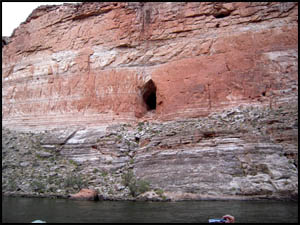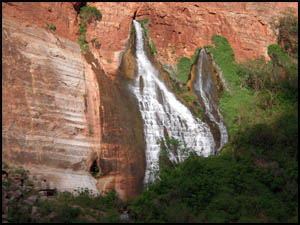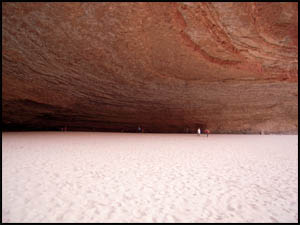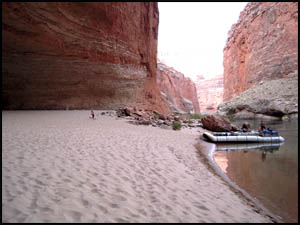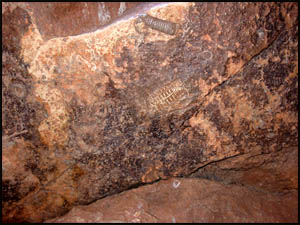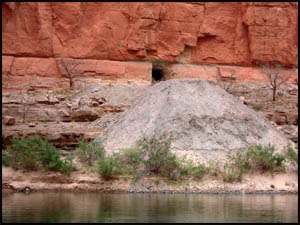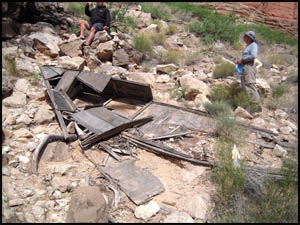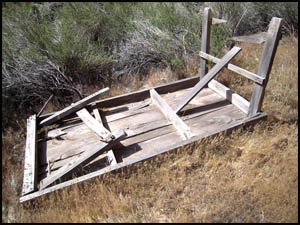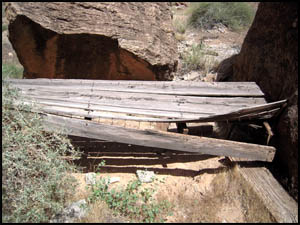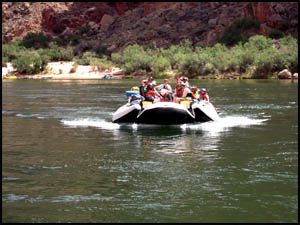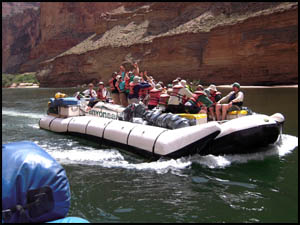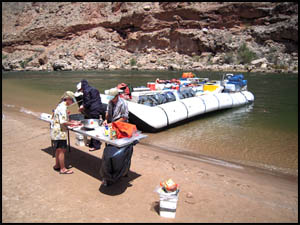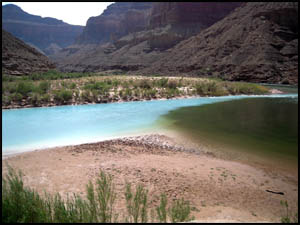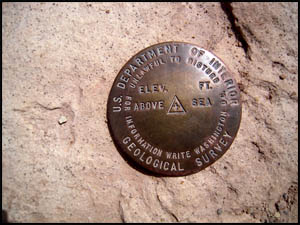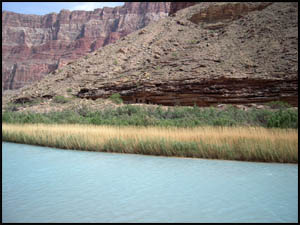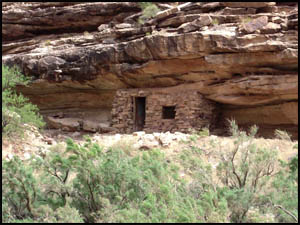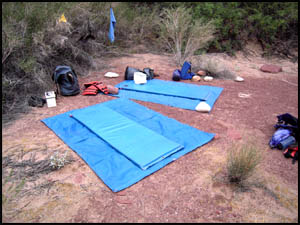The morning routine begins around 5:30 with Rachel's call for coffee. Our crew fixes a great breakfast of blueberry pancakes and sausage. For roughing in on the beach, it doesn't get much better than this. The plan each day is to leave by 7:30. We get away early this morning. Right next to our campsite is Stanton's Cave, named for Robert B. Stanton, leader of Frank M. Brown's ill-fated 1889 railroad survey project. Next to it is Vasey's Paradise, a water source that gushes out of the Redwall.
Our first stop of the day is the Redwall Cavern, an opening discovered by John Wesley Powell on his 1869 expedition through the Canyon. It is huge and has some fossils on a rock at the west side.
We later float by a core drilling for what was to be one of two dams in the Grand Canyon. The Sierra Club brought suit and eventually stopped the project in 1968. Our next stop is Buck Farm Canyon to see the remains of the boat used by Bert Loper, who made his first run through the Canyon at age 69 and died on his second attempt a decade later. A brass plaque was erected in his honor. This is also the site of the 1923 Birdseye Expedition of the U.S. Geological Survey, which set up camp here. I am surprised that Loper's boat and the survey tables are still somewhat intact after this many years.
For the past few minutes, our sister ship has been approaching from the rear. As they make the pass, they do the "Wave" for us.
We float by the Nankoweap granaries around noon. Keith and I are going to hike there this fall. The Nankoweap Trail is considered the toughest trail in the Canyon. We stop for lunch just down the river a little bit at Kwagunt Creek. As usual, lunch is great. Today's menu is chicken tortillas.
Our next stop is at the Little Colorado River. If there has been any recent rain, it will be flowing a muddy, brown color, but today it is a beautiful blue color. I find a Geological Survey marker, one of many I have found in the Canyon. However, this is the first one I have seen that did not have date, location, and elevation data stamped into it. The cabin used by Ben Beamer, a prospector in the late 1800s, is visible across the Little Colorado. Keith and I hiked there in 2007 by going down the Tanner Trail and across the Beamer Trail to the cabin. Several people float downstream in the Little Colorado. Unlike the Colorado River, which is a constant forty-five degree temperature because its water comes under the Glen Canyon Dam from the bottom of Lake Powell, the Little Colorado is quite warm.
The Desert View Watchtower, designed by Mary Jane Colter and completed in 1932, is now in view. We stop for the night at Tanner Rapids, named for Seth Tanner, who worked several mines nearby in the early 1900s. Keith and I camped across the River from here on our Beamer hike. Our crew fixes us halibut and cherry cobbler tonight. I'm wondering how they're going to top all this great food we've had the first two days. MAIN INDEX | HIKING INDEX | BACK TO DAY 1 | FORWARD TO DAY 3
|
